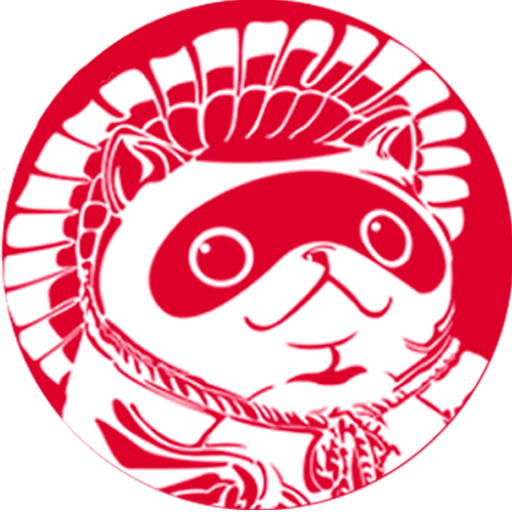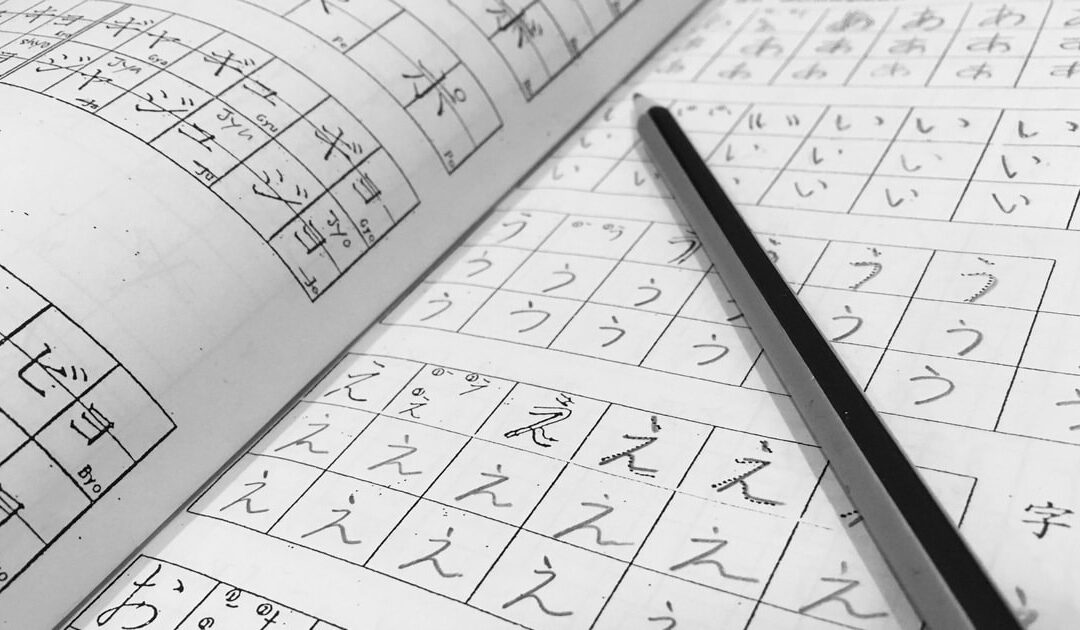If you’re just starting out with the Japanese alphabet, there’s one truth that’s going to save you time: there’s no single “alphabet,” but three systems that coexist and support each other: hiragana, katakana, and kanji. In this post we explain them as if we were having a coffee, I tell you how they are used in real life and I give you a direct plan to master them quickly without stress.
The three Japanese alphabets: hiragana, katakana and kanji
Kanji: ideograms of Chinese origin
Kanji are characters with meaning (not single letters). Each one contributes an idea: 学 “study”, 生 “life/birth”, 校 “school”; and they can also be combined: 学校 (gakkō) “school”. Thanks to kanji, Japanese gains semantic precision and avoids ambiguities. They have different readings: on (of Chinese origin) and kun (native). Don’t worry, you will master them with use.
Hiragana: syllabary for native words and grammar
Japanese hiragana is a syllabary (not a pure alphabet) and represents sounds. It is used for native words, particles (は, を, に), and verb conjugations. It is the basis of the language, if you are going to prioritize, master this Japanese syllabary first.
Katakana: syllabary for foreign words and onomatopoeias
Japanese katakana has the same sounds as hiragana but with an angular shape. It is used for loanwords (バス bus, コーヒー coffee), onomatopoeia (ドキドキ “racing heart”), visual emphasis, and scientific names.
History and Evolution of Japanese Writing Systems
Influence of Chinese writing on Japanese
Japan imported Chinese characters more than a thousand years ago. To make it easier to read Chinese texts, monks added guide marks; Over time, these simplified spellings resulted in two syllabaries: hiragana (more curved stroke) and katakana (more angular).
Development and standardization of hiragana and katakana
For centuries, different variants coexisted. Today both are standardized with 46 basic signs each, plus dakuon/handakuon (が/ぱ) and combinations (きゃ, リャ).
Transition from vertical to horizontal writing
Traditionally in Japan it was written vertically (top→bottom, columns from right to left). With modernization came horizontal writing (left→right). However, in newspapers and novels vertical writing can still be seen; In websites, science and advertising the horizontal reigns. Master both and let nothing stop you.
Are you going crazy learning the Japanese alphabets?
It has happened to all of us! With our One For All course we start with you from scratch and take step by step with a fun, visual and easy-to-follow method.
Master the Japanese alphabets and give your Japanese a boost from day one!
Kanji: complexity and semantic precision
Kanji number and learning
There are thousands of kanji, to read the press or understand the signs you only need about 2,000–2,200. Don’t panic: you start with 10–20 per week and before you know it, you’ll add up to 400–800 a year.
Jyoyo kanji and its relevance
The Jōyō Kanji (official list) are around 2,136 characters in common use. Prioritize the frequent ones (day-to-day, transportation, food, work…).
Hiragana: Fundamental Foundation of the Japanese Language
Hiragana character table
46 basic sounds cover A, I, U, E, O and combinations with K, S, T, N, H, M, Y, R, W and the nasal ん.
| to | i | or | and | or | |
|---|---|---|---|---|---|
| (Members) | あ a | い i | う U | え e | お or |
| k | か ka | き ki | く KU | け KE | こ KO |
| s | さ SA | し shi | す Your | せ SE | そ so |
| t | た TA | ち Chi | つ TSU | て TE | と TO |
| n | な na | に NI | ぬ nu | ね ne | の No |
| h | は ha | ひ Hi | ふ FU | へ HE | ほ HO |
| m | ま MA | み E | む Mu | め me | も mo |
| and | や YA | — | ゆ Yu | — | よ I |
| r | ら ra | り RI | る ru | れ re | ろ RO |
| w | わ WA | — | — | — | を or (part.) |
| n | ん n | ||||
Key points:
- っ (sokuon) duplicates consonant: がっこう (gakkō).
- ん In front of b/m/p sounds “M”: しんぶん (shimbun).
- Particle は is pronounced wa when it is a thematic particle.
Use in conjugation and grammar
The Hiragana alphabet “glues” verb endings (食べます, 行きたい) to kanji, marks particles (に/で/を), and writes simple native words (これ, それ). Without hiragana, grammar wouldn’t work.
Katakana: Expansion of Language with Foreign Influences
Katakana Character Table
Same sounds as hiragana, different shapes (ア, イ, ウ…). Includes chōonpu ー for long vowel: コーヒー (kōhī).
| to | i | or | and | or | |
|---|---|---|---|---|---|
| (Members) | ア | イ | ウ | エ | オ |
| k | カ | キ | ク | ケ | コ |
| s | サ | シ | ス | セ | ソ |
| t | タ | チ | ツ | テ | ト |
| n | ナ | ニ | ヌ | ネ | ノ |
| h | ハ | ヒ | フ | ヘ | ホ |
| m | マ | ミ | ム | メ | モ |
| and | ヤ | — | ユ | — | ヨ |
| r | ラ | リ | ル | レ | ロ |
| w | ワ | — | — | — | ヲ |
| n | ン | ||||
Use in loanwords and onomatopoeic expressions
- Loans (外来語): インターネット, タクシー, ピザ.
- Onomatopoeias: ワクワク (illusion), ゴロゴロ (thunder/laziness), キラキラ (glow).
- Emphasis/style: brands, posters, menus.
Practical Tips for Learning the Japanese Alphabet Quickly
Using Visual Assets and Kana Tables
Print clean hiragana and katakana boards and stick them in your study area and point out the ones you have already mastered.
Mnemonic associations to facilitate memorization
- あ (a) looks like an italicized “a”.
- ぬ (nu) has “knot”.
- へ (he) is an inverted “v” like an up arrow.
- カ (ka) is reminiscent of a minimalist K.
The more curious the image you relate it to, the better you will memorize it.
Consistency in daily learning (15-20 minutes)
Forget the study beatings. With 15–20 minutes a day for 2–3 weeks you will read hiragana and katakana fluently. Alternate 5 minutes of strokes + 5 minutes of reading aloud + 5 minutes of rapid dictation.
Integration with cultural consumption (manga, anime, etc.)
Make Japanese your “play zone”: pause the anime to read posters, sing openings reading furigana, flip through manga with furigana. Learning like this is addictive.
Importance of a native teacher in learning the Japanese alphabet
A native teacher will correct your stroke order, pronunciation (that ふ soft, the つ vs し) and give you immediate feedback to avoid bad habits.
Japanese Reading and Writing Practice
Use of manga, magazines and books to practice
Start with furigana materials. Read aloud, mark new kanji and write down the pronunciation and meaning with an example.
Watch TV shows and movies with Japanese subtitles
Put Japanese subtitles. First try to understand by ear and then confirm them by reading. Write down 3 expressions per episode and repeat it in a spaced manner.
Regular Writing and Reading Exercises
- Word dictation (3–5 minute profession).
- Double-sided flashcards : kana→sound and sound→kana.
- Copywork: copy phrases from real posters, short posts or dialogues.
- Speed: Time reading the entire table and repeat every 3 days.
Co-founder and CEO of Doki Doki Japan. After studying Japanese in Japan between 2017 and 2019, he founded this school with the aim of offering accessible and authentic education to students who want to learn Japanese.

